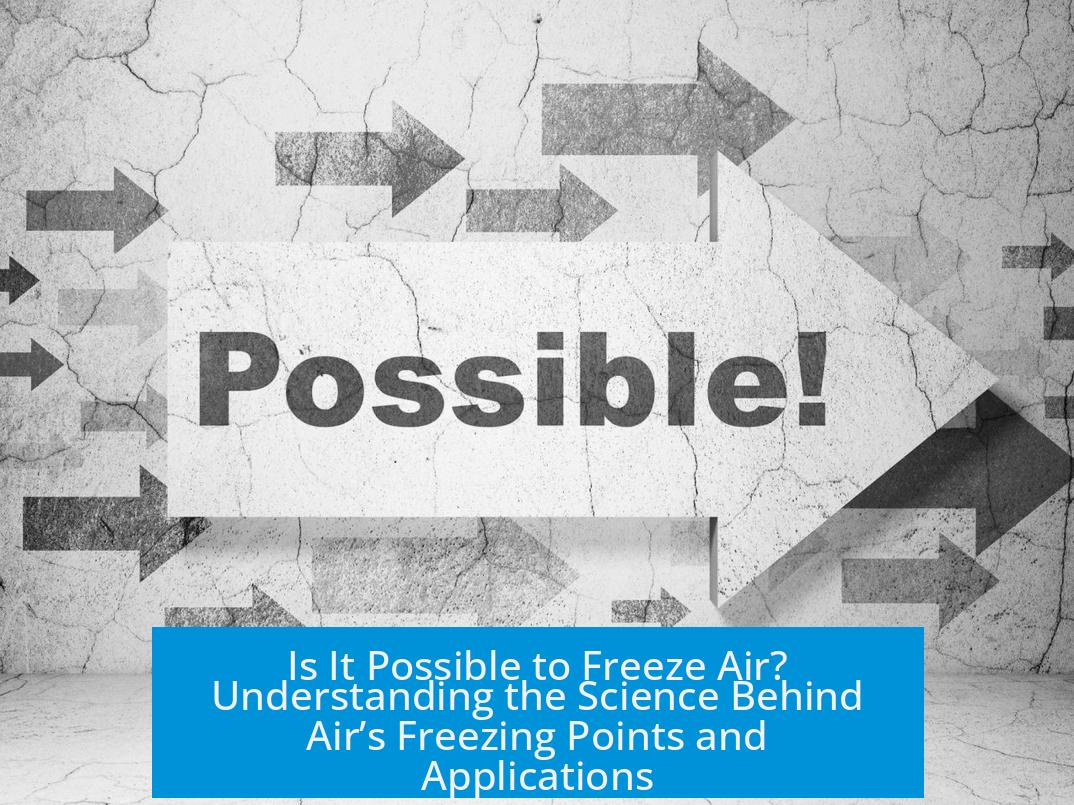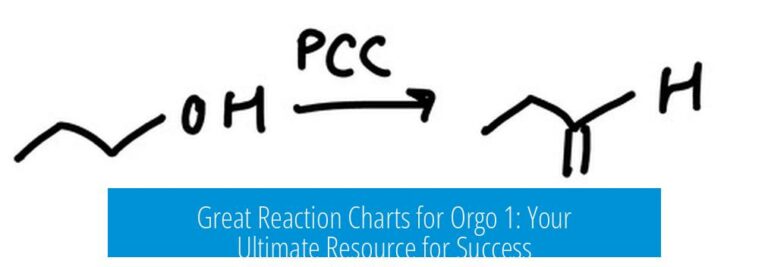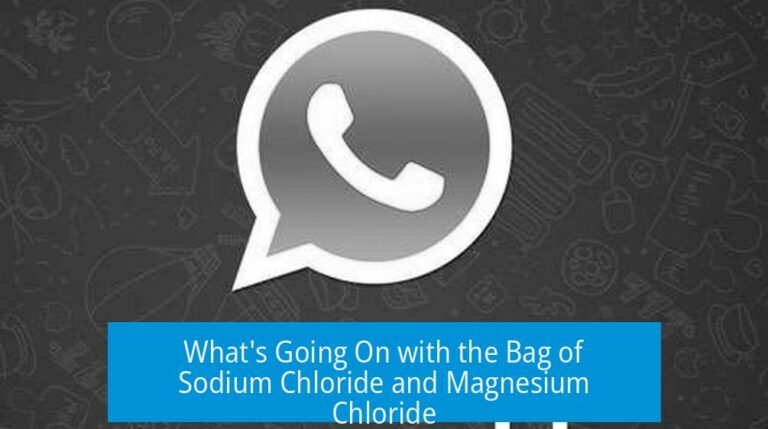Is It Possible to Freeze Air?

Yes, it is possible to freeze air, but not as a single uniform solid. Air, a mixture of gases, transitions from gas to liquid and then to solid components at extremely low temperatures. Each constituent freezes at distinct temperatures, making the concept of “freezing air” more complex than freezing a pure substance.
Composition of Air and Freezing Points of Its Components
Air consists mainly of nitrogen (~78%), oxygen (~21%), argon (~1%), and trace amounts of carbon dioxide and other gases. Each component has its own liquefaction and freezing points:
- Nitrogen: Liquefies at -196°C and freezes at -210°C.
- Oxygen: Liquefies at -183°C and freezes at -219°C.
- Argon: Liquefies around -186°C and freezes close to -189°C.
- Carbon Dioxide: Sublimes (solid to gas) at -79°C under atmospheric pressure.
Because these temperatures differ, freezing air involves separately solidifying its components rather than creating a uniform solid mixture.
Liquefying Air: The Industrial Process
Turning air into liquid is a standard industrial procedure known as cryogenic air separation. Specialized equipment cools air below the liquefaction points of its components, roughly between -183°C and -196°C. Compressors, turbines, and heat exchangers enable cooling to these extremely low temperatures.
The distinct condensation points allow separation by distillation. Liquid oxygen, nitrogen, and argon are drawn off as they liquefy at different temperatures. This process supplies gases for medical, industrial, and rocket propulsion purposes.
From Liquid to Solid: Freezing Air’s Components

Freezing these liquid gases requires further cooling, typically about 50°C colder than their liquefaction points. For example, liquid oxygen freezes at -219°C, and nitrogen freezes at -210°C.
Achieving solid states often involves reducing pressure to prompt evaporation and additional cooling. However, the gases solidify at different temperatures and rates, so “solid air” is actually a mixture of solid nitrogen, oxygen, and argon, each in its crystalline form. Mixing these solid components is feasible, but challenging in practice due to differences in thermal properties.
Practicality and Historical Context
Freezing air is rarely performed because it offers limited practical benefit. Solid air is only marginally denser than liquid air and far more difficult to handle or store.
Historically, Scottish chemist Sir James Dewar produced solid air in 1894 at the Royal Institution in London. This was mainly a scientific demonstration rather than an industrial process.
Conditions for Solid Air Formation
The phase diagram of air shows that below the triple point temperature of approximately -213.4°C, air exists as a solid regardless of pressure. This differs from many substances, which require specific pressure and temperature combinations to solidify.
Temperatures lower than -219°C freeze oxygen, and nitrogen solidifies near -210°C. Argon’s freezing point is close to -189°C. Thus, at sufficiently low temperatures, the components crystallize, forming solid phases, but not as a single homogeneous solid.
Handling and Applications Related to Freezing Air Components

- Liquid oxygen is widely used in medicine and rocketry, produced by cooling air and separating gases.
- Transportation of liquid oxygen involves pressurization to prevent boiling at -183°C, enhancing safety and usability.
- Solid oxygen or nitrogen have limited applications due to handling difficulties and instability.
Technical Clarifications
- Freezing transitions occur from liquid to solid; gases condense to liquid first at their dew points.
- Water vapor in air freezes before other components due to higher freezing point (~0°C).
- Hydrogen and helium, present only in trace amounts, require near absolute-zero temperatures (< -260°C) for liquefaction or solidification.
Summary
- Air is a gas mixture consisting mainly of nitrogen, oxygen, and argon.
- Liquefaction of air components occurs between -183°C and -196°C; freezing requires temperatures below -210°C.
- Freezing air results in separate solid phases of nitrogen, oxygen, and argon, not a uniform solid.
- This process is technically possible but rarely performed due to limited practical uses.
- Liquid oxygen is commonly produced and used industrially, while solid air has mostly scientific interest.
Is It Possible to Freeze Air? Let’s Chill with the Facts!

Is it possible to freeze air? The short answer is yes—but with some wild caveats! Air is no simple substance; it’s a cocktail of gases that freeze at vastly different temperatures. So, freezing “air” means something a bit more complex than just tossing it in your freezer.
Let’s unpack the frosty mystery step-by-step.
What’s in Air, Anyway? The Cold Chemistry
First, air is mostly nitrogen (about 78%), followed by oxygen, argon, and a sprinkle of CO2 and other trace gases. Each of these has its own chill threshold.
- Nitrogen, the major player, freezes at a jaw-dropping -210°C (-346°F).
- Oxygen liquefies at -183°C (-297°F) and freezes solid at -218°C (-361°F).
- Argon hits liquid at -186°C (-303°F) and freezes at -189°C (-308°F).
- CO2 likes to sublimate directly to solid at around -79°C (-110°F).
These are no casual-cold temperatures—they’re frigid enough to make even a penguin shiver. Your typical home freezer, with a chilling max of about -20°C (-4°F), is hopeless here.
Liquefying Air: A Common Industrial Trick
Here’s where things get interesting. Turning air into a liquid isn’t just possible—it’s a routine industrial event. In fact, specialized equipment like compressors and heat exchangers routinely cool air to between -320 and -293°F (-196 to -183°C), at which point the components turn liquid.
This isn’t some sci-fi wizardry—it’s called cryogenic distillation. Because nitrogen, oxygen, and argon liquefy at slightly different points, engineers can separate them efficiently. Liquefying air is the stepping stone to getting closer to freezing it.
From Liquid to Solid: The Real Freeze Challenge

Here’s the kicker: to go solid, you have to drop temperatures about 50 degrees colder than their liquid phase points. That means ultracold conditions below -210°C (-346°F) to start seeing things freeze up.
And that’s not all. Since air is a mixture, its components freeze at different rates, messing with the perfect balance of gases. Nitrogen falls out first, then oxygen, argon, and so forth. So, if you’re dreaming about a solid block of “air,” don’t hold your breath. You’d actually get a weird mix of frozen chunks—and the proportions would shift as you go colder.
Fun historical fact: Scottish chemist Sir James Dewar reportedly produced solid air way back in 1894 at the Royal Institution in London. So, yes, freezing air isn’t just theoretical; we’ve done it (or at least its components).
Solid Air: Why Bother?
You might wonder: if you can freeze air, why don’t we see it everywhere? The answer boils down to practicality.
- Solid air isn’t much denser than liquid air, so it’s bulky and cumbersome.
- Handling and storing it is a technical headache—imagine trying to keep a mountain of stuff below -210°C constantly.
- The industrial needs just aren’t there. Most applications prefer liquid oxygen or nitrogen over solid versions.
For example, liquid oxygen is the star of the show in hospitals and space rockets. It’s easier to manage—kept at -183°C but pressurized to stay liquid—and supports life and combustion like a champion.
How About the Air Phase Diagram? The Temperature-Pressure Dance
Air’s phases—gas, liquid, solid—depend on temperature and pressure. Below a certain “triple point” (-213.4°C), air solidifies regardless of pressure. That means under enough cold, even if you crank up or down the pressure, solid air can form.
Here’s the catch: it takes specialized equipment and serious energy to maintain these temperatures and pressures. And then you have to deal with the fact that nitrogen, oxygen, and argon never freeze perfectly in sync.
Technical Tidbits and Oddities

- Freezing technically means liquid to solid—so first, air liquefies, then freezes as you push temperatures down.
- Water vapor in air freezes first, because it turns solid at much higher temps.
- Hydrogen, found minutely in the atmosphere, is nearly impossible to freeze—close to absolute zero is needed.
- Argon is light but can freeze—though at a slightly lower temperature than oxygen.
- CO2 doesn’t liquefy easily under normal pressure; it sublimates straight to solid “dry ice.”
So What’s the Bottom Line?
Yes, it’s possible to freeze air, but only under extremely cold conditions—way beyond everyday life’s reach. You won’t find frozen air cubes at your local grocery store, but science labs and industrial setups achieve this in controlled environments.
If you just want to see it, there’s a neat video where liquid helium cools air into solid form—a dazzling display of phase magic on a tiny scale (click here to watch solid air being made).
Practical Pointers for Curious Minds
- Interested in freezing gases? Start by liquefying air using industrial cryogenic processes.
- Remember that the freezing points vary—so expect your “air freeze” to separate into distinct solids.
- Liquid forms are often more useful and easier to handle than solid ones.
- For enthusiasts, research the phase diagrams of air—not just temperature but pressure all matter.
Final Thought: Freeze Air? Only if You’re Brave Enough to Face the Cold!
We breathe air as gas. Changing that mix into a solid is no picnic—it’s a journey to extremes. But science has shown it’s not only possible but also fascinating. Who knew that the invisible blanket around us could be transformed into something solid, if only for a fleeting moment in cryogenic wonder?
Can air be frozen as a whole substance?
No. Air is a mix of gases with different freezing points. Each component like nitrogen and oxygen freezes separately at very low temperatures, so you can’t freeze the entire mixture evenly.
What temperature is needed to make air solid?
Air becomes solid below about -213.4°C. At this extreme cold, the gases in air transition to solid, but maintaining these conditions takes special equipment.
Is freezing air commonly done in industry?
Freezing air isn’t common. Liquefying air is routine and useful for separating gases. Solid air offers little advantage and is harder to handle, so it’s rarely produced.
How does liquid oxygen relate to freezing air?
Liquid oxygen forms by cooling air to -183°C. It’s widely used in hospitals and rockets. But turning oxygen into a solid needs colder temperatures, near -218°C.
Why can’t air simply be frozen like water?
Air components have different freezing points and behave independently. Water freezes at 0°C, but nitrogen and oxygen need temperatures below -210°C to solidify, making the process complex.





Leave a Comment